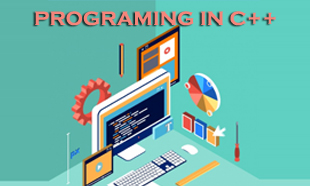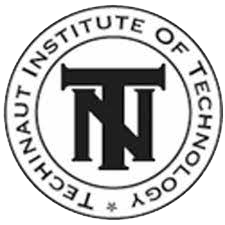0
Programming Course in C++" at Verma Computer Institute, Hazratganj, Lucknow, Uttar Pradesh, affiliated with Techinaut Institute of Technology, provides comprehensive training in C++ programming language, covering fundamentals, data structures, and object-oriented concepts, preparing students for software development roles.
PROGRAMMING COURSE IN C++
In the heart of Hazratganj, Lucknow, Uttar Pradesh, Verma Computer Institute is a bastion of technological education. Offering a six-month programming course in C++, this esteemed institution, affiliated with the Techinaut Institute of Technology, provides students with a comprehensive foundation in one of the world's most versatile and widely used programming languages. This course, which runs from [start date] to [end date], is meticulously designed to equip aspiring programmers with the skills and knowledge necessary to excel in the dynamic field of software development.
THE OBJECTIVE OF THE COURSE:
The primary objective of the "Programming Course in C++" at Verma Computer Institute is to empower students with a thorough understanding of C++ programming principles and techniques. By the end of the course, participants will not only be proficient in writing efficient, structured, and object-oriented C++ code but also be able to apply these skills to solve real-world problems. Through a combination of theoretical learning, practical exercises, and hands-on projects, students will develop the confidence and expertise to embark on successful careers in software development.
Section 1: Introduction to C++
In this introductory section, students are introduced to the origins and significance of C++ in the realm of programming languages. They learn about its evolution from the original C language and its role as a powerful and versatile tool for software development. Key concepts such as syntax, data types, and basic program structure are covered, laying the groundwork for subsequent topics. These concepts are theoretical and applied in practical scenarios such as [specific practical applications].
Section 2: Object-Oriented Programming Concepts
Building upon the foundation established in the introductory section, students delve into the principles of object-oriented programming (OOP). They learn about encapsulation, inheritance, and polymorphism—the three pillars of OOP—and how these concepts facilitate the creation of modular, reusable, and maintainable code. Through practical examples and exercises, students understand OOP principles and their application in C++ programming.
Section 3: The Basics of C++
This section provides a comprehensive overview of the C++ language's fundamental elements. Students learn about variables, constants, data types, and basic input/output operations. They also explore control structures such as loops and decision-making constructs, enabling them to write structured and efficient C++ code.
Section 4: Working with Operators and Expressions
Operators are essential components of any programming language. In this section, students learn about the various operators available in C++. They explore arithmetic, relational, logical, and bitwise operators, along with their precedence and associativity rules. Through hands-on exercises, students master the use of operators to perform mathematical calculations, comparisons, and logical operations in their programs.
Section 5: Controlling the Program Flow
Control flow is crucial for writing programs to make decisions and execute instructions based on certain conditions. In this section, students learn about conditional statements such as if, else, if, and switch-case and loop structures, including for, while, and do-while loops. They understand how to use these constructs effectively to control the flow of their programs and implement iterative algorithms.
Section 6: Using Functions/Procedures
Functions play a vital role in modularizing code and promoting code reusability. In this section, students learn how to define and use functions in C++, including function prototypes, parameters, return types, and scope. They explore the concept of function overloading and learn how to create functions that can accept different arguments and return different values. Students understand the significance of functions in organizing and optimizing their code through practical examples.
Section 7: Pointers and Arrays
Pointers and arrays are powerful features of C++ that enable efficient memory management and data manipulation. In this section, students learn about the basics of pointers, including pointer arithmetic, dereferencing, and dynamic memory allocation. They also explore arrays, multidimensional arrays, and pointers to arrays, understanding how these concepts are used to manipulate data structures and optimize program performance.
Section 8: Binding Data and Functions
Understanding how data and functions are bound together is essential for mastering object-oriented programming in C++. In this section, students delve into the concepts of classes and objects, constructors and destructors, and access specifiers such as public, private, and protected. They learn how to create and manipulate class objects, encapsulate data using member functions, and implement class hierarchies through inheritance and composition.
Section 9: Function and Operator Overloading
Function overloading and operator overloading are advanced features of C++ that enable developers to create more expressive and concise code. In this section, students learn how to overload functions and operators to handle different types of arguments and perform custom operations. They explore the benefits of overloading in simplifying code and enhancing code readability, gaining proficiency in leveraging these features effectively.
Section 10: Reusing Classes
Reusability is a crucial principle of software engineering. In this section, students learn how to create and reuse classes effectively in C++. They explore inheritance, composition, and aggregation techniques to build modular and extensible class hierarchies. They also learn about virtual functions and polymorphism—the cornerstone of object-oriented design—and how to leverage these concepts to create flexible and maintainable code.
Section 11: Virtual Functions and Polymorphism
Polymorphism is a powerful concept that allows objects of different types to be treated uniformly. In this section, students learn about virtual functions, abstract classes, and dynamic binding—the mechanisms behind polymorphic behaviour in C++. They understand how to create polymorphic courses and use them to write code that is more flexible, scalable, and resilient to change.
Section 12: Templates, Exception Handling, etc.
Templates and exception handling are advanced features of C++ that further enhance its expressiveness and robustness. In this final section, students learn about template classes and functions, enabling them to create generic algorithms and data structures that can operate on different types. They also explore exception-handling mechanisms such as try, catch, and throw, learning to handle errors and exceptional conditions in their programs gracefully.
CONCLUSION:
In conclusion, the "Programming Course in C++" offered by Verma Computer Institute is a comprehensive and meticulously designed program that leaves no stone unturned in equipping students with the knowledge and skills necessary to excel in software development. Through a structured curriculum covering all aspects of C++ programming—from basic syntax to advanced concepts—students graduate from the course with a deep understanding of the language and the confidence to tackle complex programming challenges easily.


